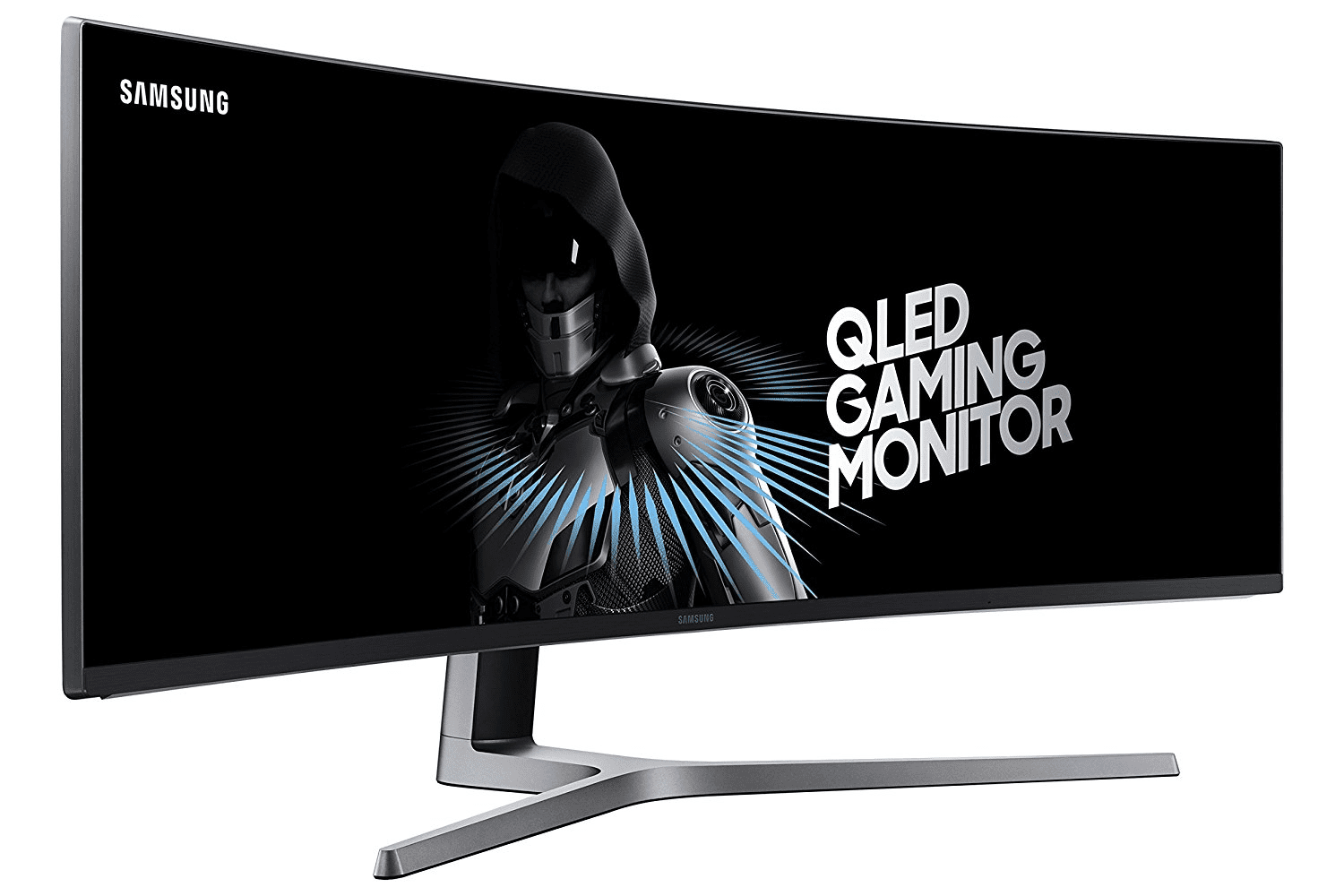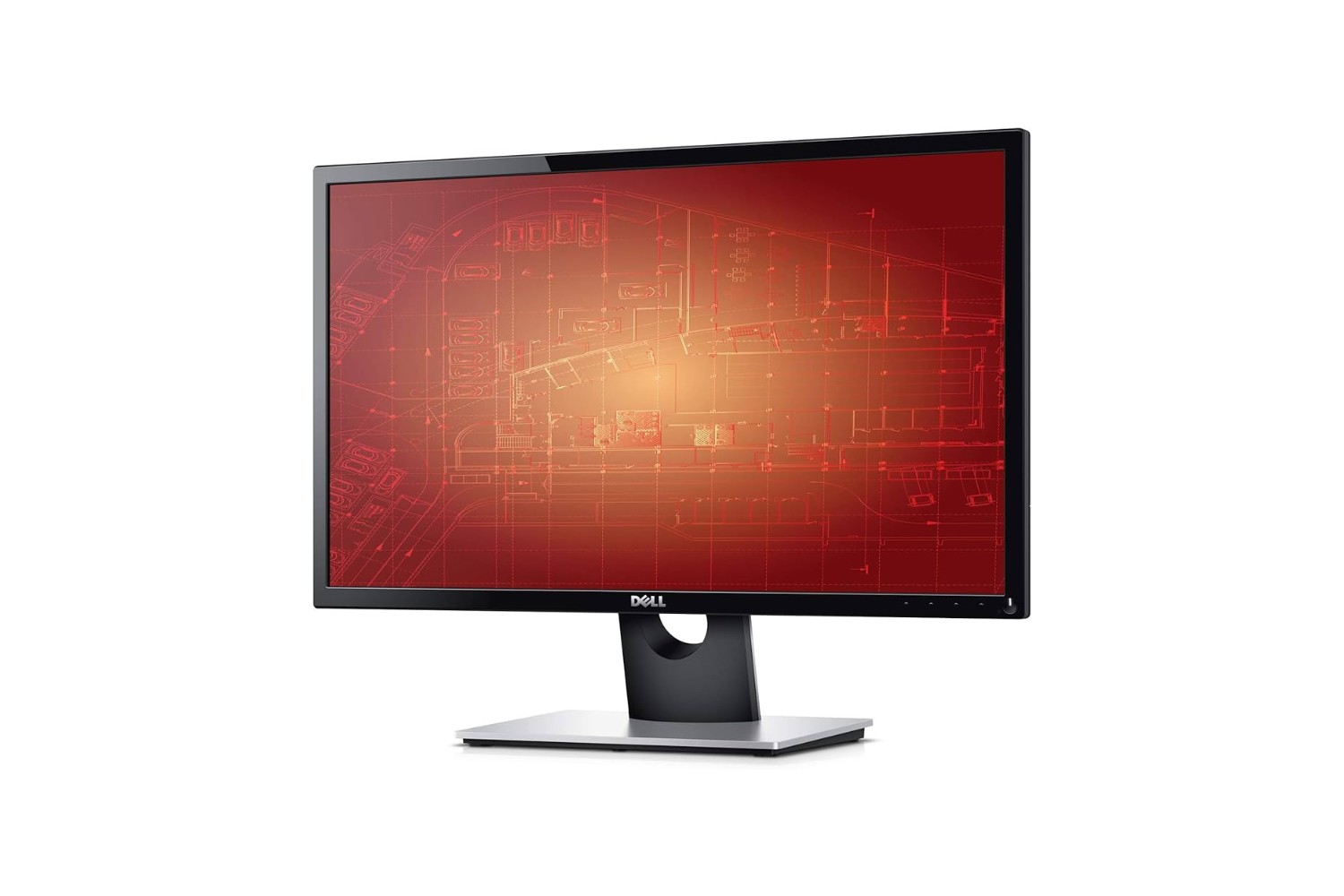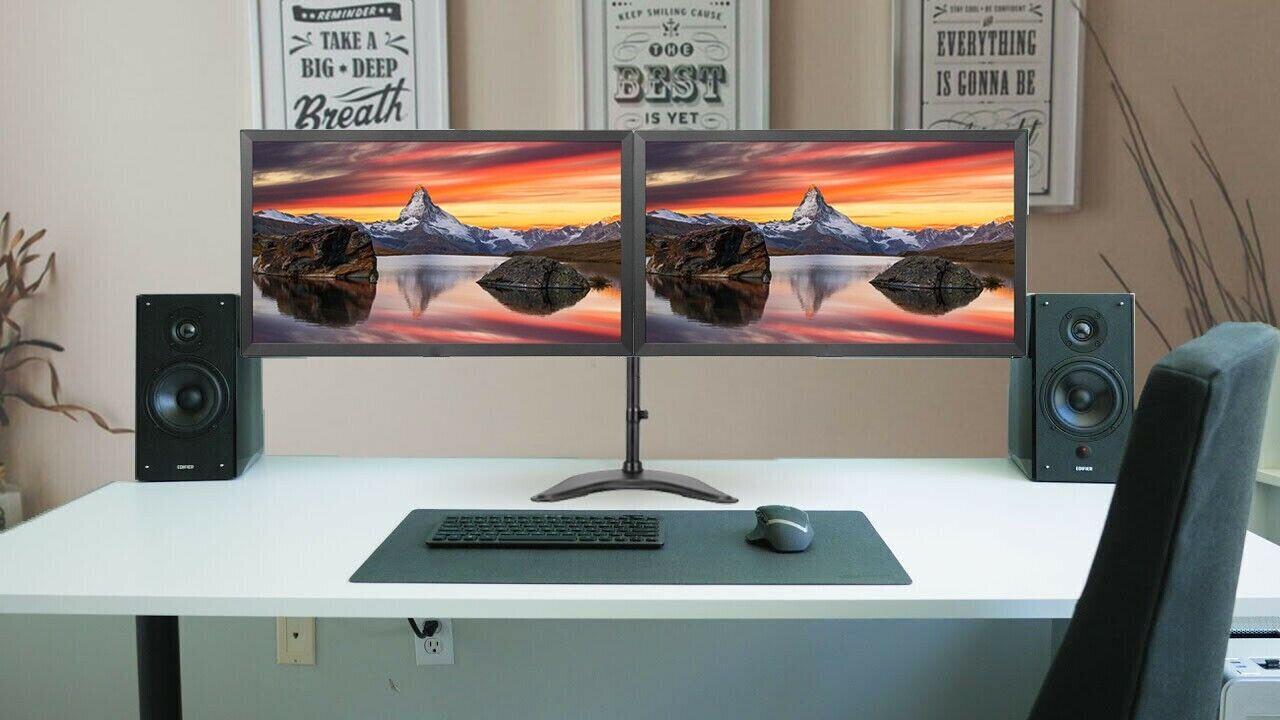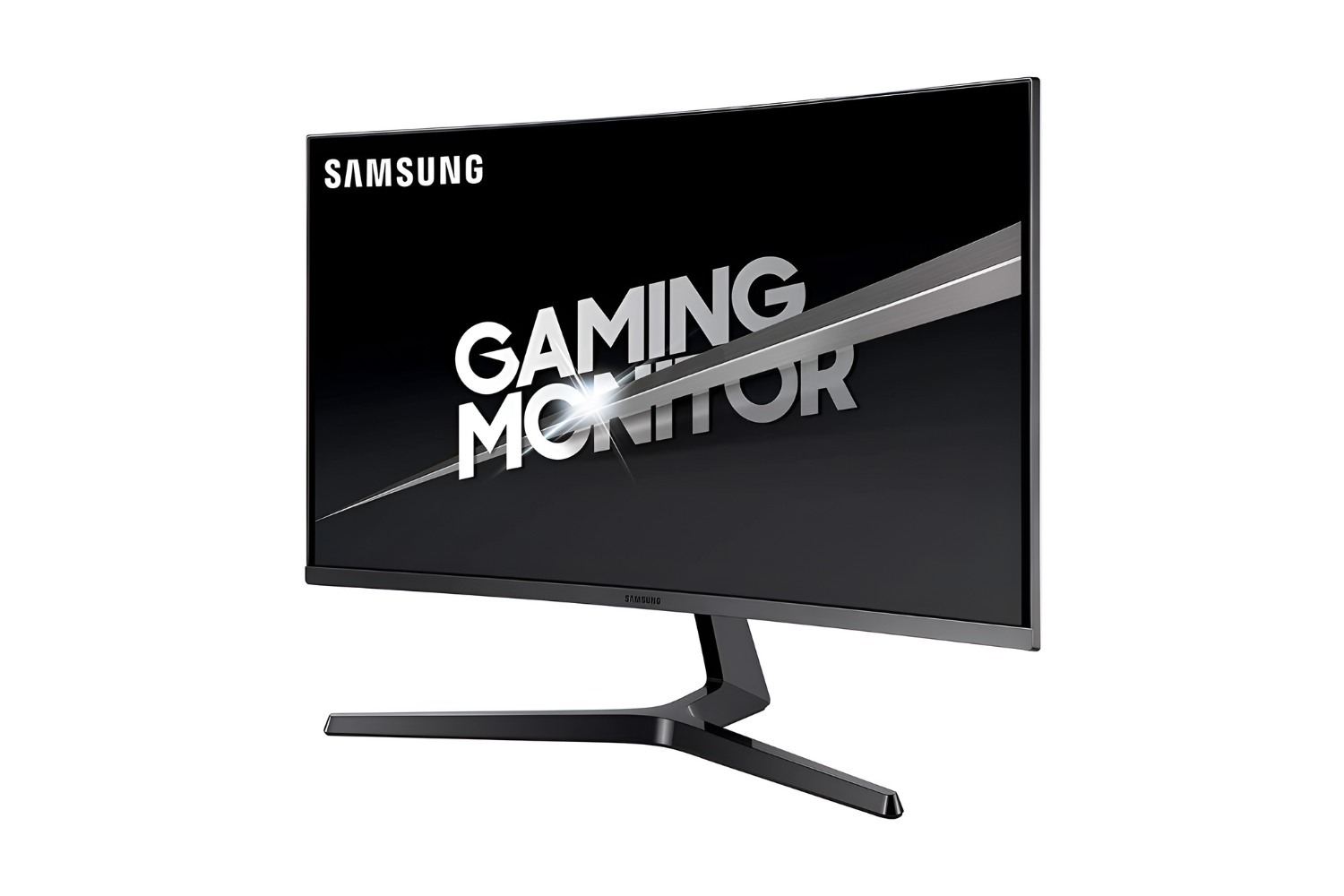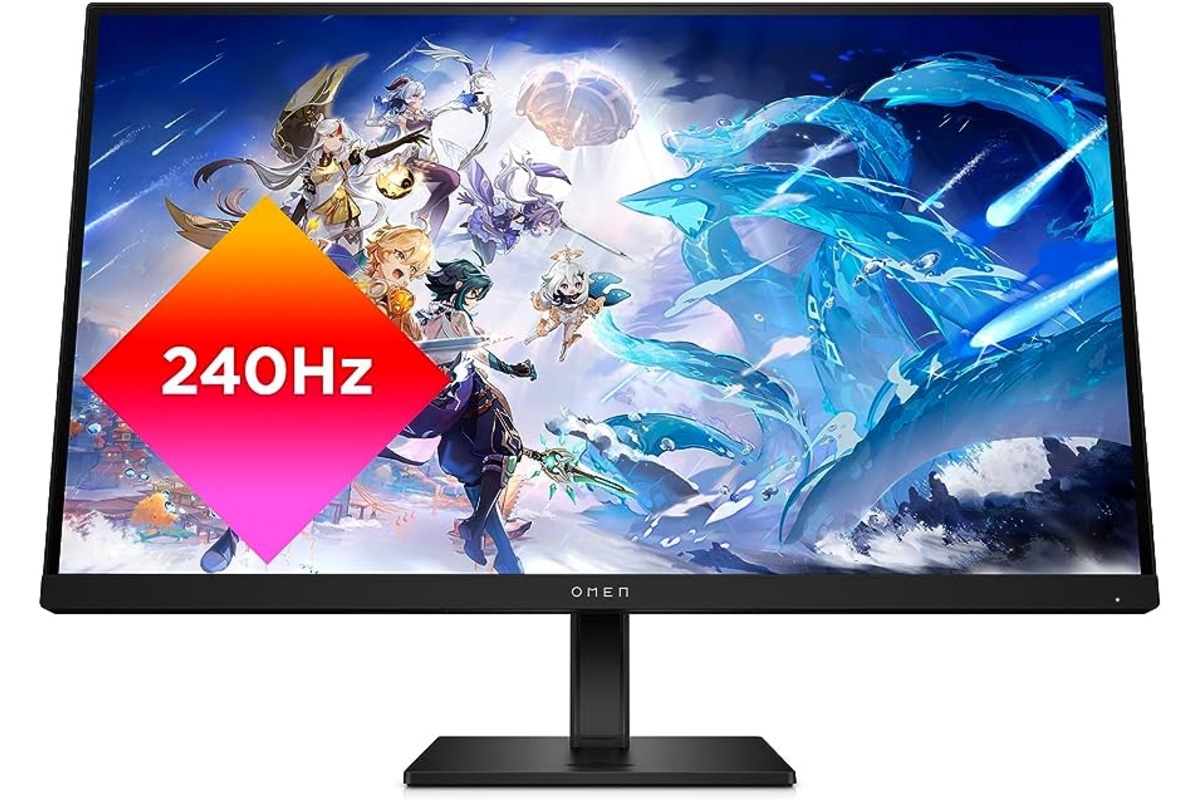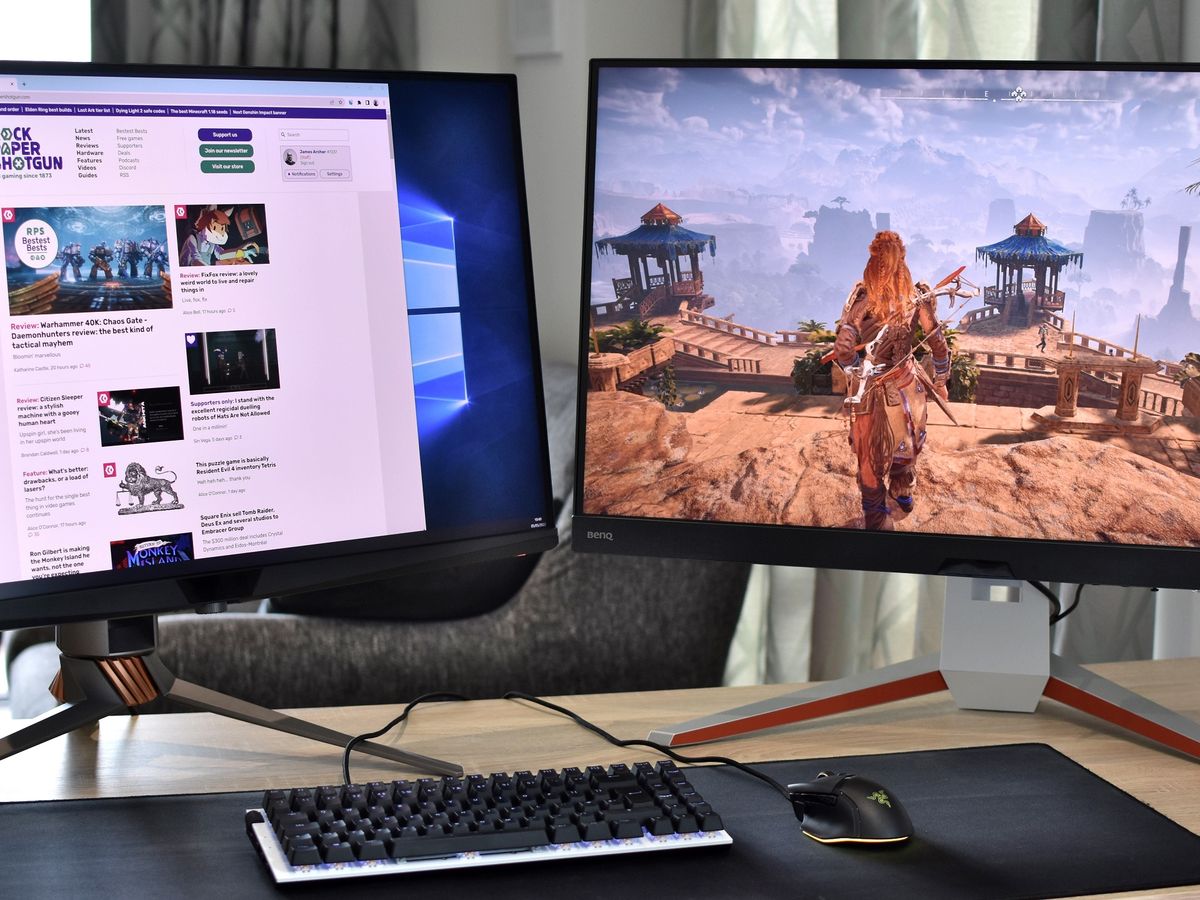Introduction
Monitors play an essential role in our daily lives, whether we realize it or not. From workstations to home entertainment systems, these devices are an integral part of how we interact with digital content. In this article, we will delve into the world of monitors and explore their various functions, features, and types.
A monitor, also known as a display or screen, is an output device that visually presents information from a computer or other electronic devices. It allows users to view images, videos, text, and graphics in a visual format. While initially used primarily with desktop computers, monitors now come in various shapes and sizes to fulfill different needs, ranging from gaming and design to professional tasks and entertainment.
Modern monitors utilize liquid crystal display (LCD) or organic light-emitting diode (OLED) technology to produce high-resolution and vibrant visuals. The images displayed on the screen are composed of thousands or even millions of tiny pixels, each capable of producing different colors and shades. The combination of these pixels forms the visible image that we perceive on the monitor.
With the evolution of technology, monitors have become more advanced and feature-rich. They offer a range of functionalities and settings that allow users to personalize their viewing experience. From adjustable brightness and contrast levels to different color gamuts and calibration options, monitors provide flexibility and customization to cater to individual preferences.
Furthermore, the connectivity options of monitors have also expanded. With the advent of HDMI, DisplayPort, and USB-C, connecting a monitor to a computer or other devices has become seamless. This enables users to enjoy high-quality visuals from various sources, including laptops, gaming consoles, and streaming devices.
In the following sections, we will cover the fundamental functionalities of monitors, their resolutions and aspect ratios, refresh rates and response times, adjustment settings, special features and technologies, as well as the different types of monitors available in the market today. So, let’s dive deeper into the fascinating world of monitors and explore their capabilities.
Basic Functionality
At its core, the primary function of a monitor is to display visual content. Whether it’s a document, website, image, or video, the monitor serves as the medium through which we interact with digital information.
The monitor receives signals from the computer’s graphics card or other devices and uses its internal components to transform those signals into a visual representation on the screen. This process involves converting electrical signals into colors and brightness values for each pixel on the display.
Monitors come in various sizes, with screen resolutions ranging from standard definition to high-definition and even 4K or 8K resolutions. The resolution determines the amount of detail and clarity in the displayed image. Higher resolutions result in sharper and more detailed visuals, making it ideal for tasks that require precise rendering, such as photo editing, graphic design, and video production.
Another essential aspect of a monitor’s functionality is its color reproduction. Monitors utilize different color spaces, such as sRGB, Adobe RGB, or DCI-P3, to accurately represent colors. These color spaces define the range of colors that a monitor can display, ensuring that the colors you see on the screen match the intended colors of the content.
Adjustability is also a significant factor in a monitor’s functionality. Most monitors offer the ability to adjust settings such as brightness, contrast, and color temperature to suit individual preferences. These adjustments allow users to optimize the viewing experience based on their environment and personal preferences.
In addition to basic display functionality, some monitors also feature built-in speakers, allowing users to enjoy audio playback without the need for separate speakers or headphones. This is particularly useful for multimedia purposes, such as watching videos or participating in video conferences.
Moreover, many modern monitors come with additional connectivity options, such as USB ports, HDMI inputs, and audio jacks, enabling seamless integration with other devices. This allows users to connect multiple peripherals, such as cameras, external hard drives, or gaming consoles, enhancing the versatility and usability of the monitor.
Overall, the basic functionality of a monitor revolves around its ability to display visuals accurately and provide options for customization. Whether it’s for work, entertainment, or creative pursuits, monitors play a vital role in translating digital information into a visual format that we can interact with effectively.
Displaying Images and Videos
One of the primary purposes of a monitor is to deliver captivating visual experiences by effectively displaying images and videos. Whether you’re editing photos, watching movies, or playing video games, a high-quality monitor enhances the overall viewing experience.
When it comes to displaying images, monitors need to accurately represent colors, contrasts, and details. The color accuracy and color depth of a monitor greatly influence how accurately it can reproduce the colors in an image. Monitors with wider color gamuts and higher bit-depths can display a larger range of colors, resulting in more vibrant and lifelike images.
Image resolution is another crucial factor. Higher resolutions, such as 4K or 8K, offer sharper and more detailed images. This is particularly important in fields like graphic design, photography, and digital art, where precise details are essential for accurate editing and showcasing.
For video playback, monitors should be capable of handling different video formats and frame rates. Most modern monitors support standard video playback at 30 or 60 frames per second (FPS). However, for a smoother viewing experience, especially in gaming and fast-paced videos, higher refresh rates, such as 120Hz or 144Hz, are preferred.
Another important aspect is the aspect ratio of the monitor. The aspect ratio determines the width and height proportion of the display. Common aspect ratios include 16:9, 21:9 (ultrawide), and 4:3. The aspect ratio can have an impact on the viewing experience, depending on the type of content being displayed. For example, a wider ultrawide monitor is ideal for movie enthusiasts who want an immersive experience, while a traditional 16:9 aspect ratio is suitable for everyday use and most content formats.
It is worth mentioning that some monitors also incorporate technologies like HDR (High Dynamic Range) to enhance image and video quality. HDR-enabled monitors provide a greater range of brightness levels, resulting in better contrast, more vibrant colors, and improved details. This technology significantly enhances the visual experience, especially for HDR-compatible content.
Overall, the ability of a monitor to effectively display images and videos is essential in numerous contexts, from professional graphic design to immersive gaming experiences. The combination of color accuracy, resolution, aspect ratio, and additional technologies like HDR ensures that the monitor delivers stunning and true-to-life visuals that captivate and engage the viewers.
Connecting to a Computer
Connecting a monitor to a computer is a straightforward process that allows users to harness the display capabilities of their devices. By establishing this connection, users can extend their desktop workspace, utilize multiple monitors, and enjoy high-quality visuals.
The most common method of connecting a monitor to a computer is through the use of video cables. The type of cable depends on the ports available on both the computer and the monitor. The two most prevalent cable types are HDMI (High-Definition Multimedia Interface) and DisplayPort.
HDMI cables are widely used and support both video and audio signals. They are prevalent on consumer-oriented devices such as laptops, desktop computers, gaming consoles, and set-top boxes. HDMI cables deliver high-definition video and audio signals, making them suitable for various multimedia applications.
On the other hand, DisplayPort cables offer a higher bandwidth than HDMI, enabling support for higher resolutions and refresh rates. DisplayPort connections are common in professional settings and with high-end monitors and graphics cards. They are preferred for tasks that require high visual fidelity, such as video editing, 3D rendering, and gaming.
Another connectivity option is the USB-C port, which has gained popularity due to its versatility. USB-C can transmit video, audio, and data simultaneously, making it convenient for connecting a monitor to laptops and other portable devices. Moreover, USB-C monitors often act as power sources, charging connected devices while they’re in use.
It’s important to note that when connecting a monitor to a computer, it’s essential to ensure compatibility between the video ports and cables. Most modern monitors have multiple input options, allowing users to choose the connection method that works best for their specific set-up.
In some cases, older computers or monitors may use VGA (Video Graphics Array) or DVI (Digital Visual Interface) connectors. While these connectors are gradually being phased out, adapters are available to connect them to modern monitors with HDMI or DisplayPort ports.
Overall, connecting a monitor to a computer is a seamless process and allows users to unlock the full potential of their display capabilities. By choosing the appropriate cables and ensuring compatibility, users can enjoy a multi-screen setup, increased workspace, and stunning visuals for work or entertainment purposes.
Resolutions and Aspect Ratios
Resolutions and aspect ratios are key considerations when choosing a monitor, as they directly impact the clarity, detail, and overall visual experience. Understanding these concepts allows users to select a monitor that best suits their specific needs.
Resolution refers to the number of pixels displayed on the screen horizontally and vertically. It indicates the level of detail that the monitor can present. Higher resolutions offer sharper and more detailed images, while lower resolutions may result in pixelation and a loss of clarity.
Common monitor resolutions include Full HD (1920×1080), Quad HD (2560×1440), 4K Ultra HD (3840×2160), and even 8K Ultra HD (7680×4320). As a general rule, higher resolutions are advantageous for tasks that require precise image rendering, such as photo editing, video production, and gaming.
Aspect ratio refers to the proportional relationship between a monitor’s width and height. It determines the shape of the display and impacts how content is presented. The most common aspect ratio for monitors is 16:9, which is widescreen and suitable for most multimedia content and everyday use.
Another aspect ratio gaining popularity is 21:9, often referred to as ultrawide. Ultrawide monitors provide a more immersive viewing experience, especially when it comes to movies, gaming, and multitasking. This aspect ratio offers a wider field of view, allowing users to see more content simultaneously.
For professional tasks that require accurate color representation, monitors with an aspect ratio of 16:10 are commonly used. This aspect ratio provides additional vertical space, which is beneficial for activities such as graphic design, CAD (Computer-Aided Design), and financial analysis.
It’s important to consider the compatibility of the monitor’s aspect ratio with the content being viewed. A mismatch between the aspect ratio of the monitor and the aspect ratio of the content may result in letterboxing (black bars on the sides) or pillarboxing (black bars on the top and bottom) to maintain the original proportions of the content.
When selecting a monitor, it’s crucial to balance resolution and aspect ratio based on the intended use. Higher resolutions are advantageous for work that requires fine detail, while aspect ratio choice depends on the desired level of immersion and the specific tasks being performed.
As technology continues to advance, monitor manufacturers are also exploring new aspect ratios and resolutions to cater to evolving needs. With options ranging from standard 16:9, ultrawide 21:9, to more niche aspect ratios like 32:9, users now have a wide array of choices to enhance their visual experiences based on their unique requirements.
Refresh Rate and Response Time
When it comes to gaming, fast-paced videos, and overall smooth display performance, two important factors to consider are the refresh rate and response time of a monitor. These specifications play a significant role in the fluidity and responsiveness of the displayed content.
Refresh rate is the number of times per second that a monitor updates or refreshes the displayed image. It is measured in Hertz (Hz). A higher refresh rate allows for smoother visual transitions and reduces motion blur, resulting in a more fluid and immersive experience. The most common refresh rates for monitors are 60Hz, 75Hz, 120Hz, and 144Hz, with some gaming monitors even offering higher refresh rates of 240Hz or more.
While a higher refresh rate can enhance the viewing experience, it’s worth noting that the benefits are more noticeable when paired with high frame rate content, such as in gaming or fast-paced videos. Most standard video content is typically recorded at 24 or 30 frames per second (FPS), so the benefits of a high refresh rate may not be fully utilized.
Response time, on the other hand, refers to the time it takes for a pixel to change from one color to another and back again. It is measured in milliseconds (ms). A lower response time results in less motion blur and ghosting, ensuring that fast-moving objects appear clearer and sharper. A typical response time for monitors ranges from 1ms to 5ms, with gaming monitors often focusing on achieving lower response times for optimal performance.
Both refresh rate and response time contribute to the overall smoothness and clarity of images and video playback. They are particularly crucial in the fast-paced world of gaming, where swift reactions and precise movements are paramount. Gaming monitors often feature high refresh rates and low response times to provide players with a competitive edge and an immersive gaming experience.
It’s important to note that achieving higher refresh rates and lower response times typically requires the use of a display panel with a higher level of technology, such as TN (Twisted Nematic) or IPS (In-Plane Switching) panels. Each panel type has its advantages and disadvantages in terms of color accuracy, viewing angles, and overall performance, so it’s essential to consider these factors alongside refresh rate and response time when selecting a monitor.
In summary, a higher refresh rate and lower response time can greatly enhance the visual experience, particularly in gaming and fast-paced content. These specifications contribute to smoother visuals, reduced motion blur, and improved responsiveness, allowing users to fully immerse themselves in their digital activities. However, it’s important to consider the content being viewed and whether it can take full advantage of these features to ensure optimal performance and value from your monitor.
Adjusting Settings
Monitors offer a multitude of settings that allow users to tailor the display to their individual preferences and optimize the visual experience. Understanding how to adjust these settings is essential for achieving the desired brightness, contrast, color accuracy, and overall comfort when using a monitor.
The most common settings found on monitors include brightness, contrast, color temperature, and gamma. These settings can be accessed through on-screen display (OSD) menus, typically controlled by buttons or a joystick located on the monitor itself.
Brightness refers to the amount of light emitted by the monitor. Adjusting the brightness allows users to make the screen more comfortable for their eyes based on the ambient lighting conditions. Too high brightness in a dark room can cause eye strain, while too low brightness in a well-lit room can result in a dim and hard-to-see display.
Contrast, on the other hand, determines the difference between the brightest and darkest areas of the screen. It affects the level of detail and depth in the displayed image. A higher contrast ratio provides more vivid and defined visuals, while a lower contrast ratio may result in a flatter or washed-out appearance.
Color temperature defines the warmth or coolness of the displayed colors. It is measured in Kelvin (K). Lower color temperatures, such as 5000K, result in warmer and more yellowish tones, while higher color temperatures, such as 6500K, produce cooler and bluish hues. Adjusting the color temperature allows users to find the optimal color balance and match their preferences or the requirements of specific tasks.
Gamma adjustment is the setting that controls how the monitor displays the gradient between black and white. It impacts the overall contrast and visibility of shadow and highlight details. Gamma settings can be adjusted to enhance visibility in dark areas or bring out more subtleties in bright scenes.
In addition to these basic settings, more advanced monitors often provide additional customization options like color saturation, hue, sharpness, and color management. These settings allow users to fine-tune the color reproduction, image sharpness, and overall visual appearance to their liking.
It’s worth mentioning that for tasks like photo editing or graphic design that require precise color representation, monitor calibration tools and color calibration software can be used to achieve accurate and consistent color reproduction across different devices. These tools ensure that the monitor’s display matches the industry-standard color profiles and provides reliable color accuracy.
Overall, being familiar with the available settings on a monitor and understanding how to adjust them allows users to personalize their display according to their preferences and optimize the visual experience for various tasks. Whether it’s adjusting brightness for better eye comfort, fine-tuning color temperature for accurate color reproduction, or customizing sharpness and saturation, these settings empower users to tailor their monitor to their specific needs and preferences.
Special Features and Technology
Modern monitors incorporate a variety of special features and technologies to enhance the overall display experience. These features go beyond the basic functionalities and offer additional benefits, such as improved visuals, increased productivity, and enhanced user convenience.
One notable technology is High Dynamic Range (HDR). HDR-enabled monitors offer a greater range of brightness levels, resulting in improved contrast, more vibrant colors, and enhanced details. HDR enhances the visual experience, particularly for content that supports HDR encoding, such as movies, games, and streaming platforms.
Adaptive Sync and Nvidia G-Sync or AMD FreeSync are technologies designed to eliminate screen tearing and reduce input lag during fast-paced gaming. These technologies synchronize the refresh rate of the monitor with the graphics card, ensuring smooth and tear-free visuals. The adaptive sync technology adjusts the monitor’s refresh rate on the fly to match the fluctuating frame rates of the games being played.
Eye care features have gained popularity in recent years, as people spend extended periods of time in front of screens. Monitors with features like flicker-free technology and blue light filters aim to reduce eye strain and minimize the negative effects caused by prolonged exposure to screen emissions. These features are especially beneficial for those who work long hours or engage in extensive gaming or multimedia activities.
USB hubs and built-in USB ports on monitors provide added convenience by allowing users to connect and charge various devices directly through the monitor. This eliminates the need for separate USB hubs or reaching to the back of the computer tower to access USB ports. USB hub monitors enhance productivity by reducing cable clutter and streamlining device connectivity.
Curved monitors have gained popularity due to their immersive viewing experience. The curved display mimics the natural curvature of the human eye, providing a more immersive and panoramic field of view. This makes curved monitors particularly appealing for gaming and multimedia consumption, offering a more engaging and enveloping visual experience.
Some monitors also come with built-in speakers, eliminating the need for external speakers or headphones. While these built-in speakers may not provide the same audio quality as dedicated speakers, they offer a convenient audio solution for tasks that require basic sound output, such as video conferences or casual media consumption.
Overall, special features and technologies incorporated into monitors enhance the visual experience, increase productivity, and provide added convenience for users. From HDR and adaptive sync for gaming enthusiasts to eye care features and USB hubs for productivity-focused individuals, these features and technologies offer a range of benefits that cater to diverse user needs and preferences.
Different Types of Monitors
Monitors come in various types, each with its own unique features, specifications, and use cases. Understanding the different types of monitors available can help users make an informed decision when selecting a monitor that best fits their specific needs and preferences.
1. Standard LCD Monitors: These monitors utilize liquid crystal display (LCD) technology to produce images. They are affordable, energy-efficient, and offer good color accuracy and contrast. Standard LCD monitors are suitable for everyday use, office work, web browsing, and multimedia consumption.
2. Gaming Monitors: Gaming monitors are designed specifically for gaming enthusiasts. They feature high refresh rates, low response times, and often support adaptive sync technologies like Nvidia G-Sync or AMD FreeSync. These monitors prioritize smooth gameplay, reduce motion blur, and eliminate screen tearing for an immersive and lag-free gaming experience.
3. Professional/Design Monitors: Professional monitors are geared towards color-critical tasks, such as graphic design, photo editing, and video production. They typically offer wide color gamut coverage, high color accuracy, and hardware calibration options to ensure precise color reproduction. Professional monitors may also feature higher resolutions, high pixel densities, and wide viewing angles.
4. Ultrawide Monitors: Ultrawide monitors have an extended aspect ratio, usually 21:9 or wider, offering a wider field of view. These monitors are ideal for multitasking, as they provide more screen real estate and allow users to work with multiple windows or applications simultaneously. Ultrawide monitors are popular among professionals, gamers, and content creators.
5. Curved Monitors: Curved monitors have a curved screen that wraps slightly around the viewer. This curvature mimics the natural shape of the human eye, providing a more immersive viewing experience and reducing eye strain. Curved monitors excel in gaming, multimedia consumption, and tasks where an enveloping display is desired.
6. Touchscreen Monitors: Touchscreen monitors enable direct interaction with the screen using touch gestures, making them suitable for tasks that require intuitive input, such as digital art, presentations, and kiosk systems. Touchscreen monitors are available in both capacitive and resistive technology, offering different levels of touch sensitivity and accuracy.
7. Portable Monitors: Portable monitors are lightweight and compact, making them highly portable and convenient for users on the go. These monitors are popular among travelers, business professionals, and those who require an additional display for working with laptops or mobile devices while maintaining mobility.
8. Curved Gaming Monitors: Curved gaming monitors combine the immersive experience of a curved display with the high refresh rates and low response times of gaming monitors. They are specifically designed to provide an enhanced gaming experience by enveloping the user in the action and reducing motion blur for smoother gameplay.
When selecting a monitor, it’s important to consider the specific needs and preferences of the user and match them to the appropriate monitor type. Whether it’s for everyday use, gaming, professional tasks, or specialized applications, there is a wide range of monitor types available to cater to different requirements.
Conclusion
Monitors are essential tools that allow us to interact with digital content and enhance our visual experiences. From basic functionality to advanced features and technologies, monitors offer a wide range of options to suit different needs and preferences.
Understanding the basic functionality of monitors, such as displaying images and videos, connecting to a computer, and adjusting settings, is fundamental in optimizing the visual experience. By selecting the appropriate resolution, aspect ratio, and adjusting settings like brightness, contrast, and color temperature, users can personalize their display according to their specific requirements.
Special features and technologies, such as High Dynamic Range (HDR), adaptive sync for gaming, and eye care features, provide additional benefits and enhance the overall viewing pleasure. As technology advances, monitors continue to offer innovative solutions, like USB hubs, built-in speakers, and curved displays, providing convenience and an immersive experience.
Considering the different types of monitors available, ranging from standard LCD monitors to gaming, professional, ultrawide, and curved monitors, empowers users to choose a device that aligns with their intended use. Whether it’s for general computing, gaming, graphic design, or multitasking, there is a monitor type tailored to every need.
In conclusion, monitors play a crucial role in our digital lives, allowing us to visualize and interact with a variety of content. By understanding their functionalities, features, and different types, users can make informed decisions and select the right monitor that enhances their productivity, gaming experience, and visual enjoyment.







